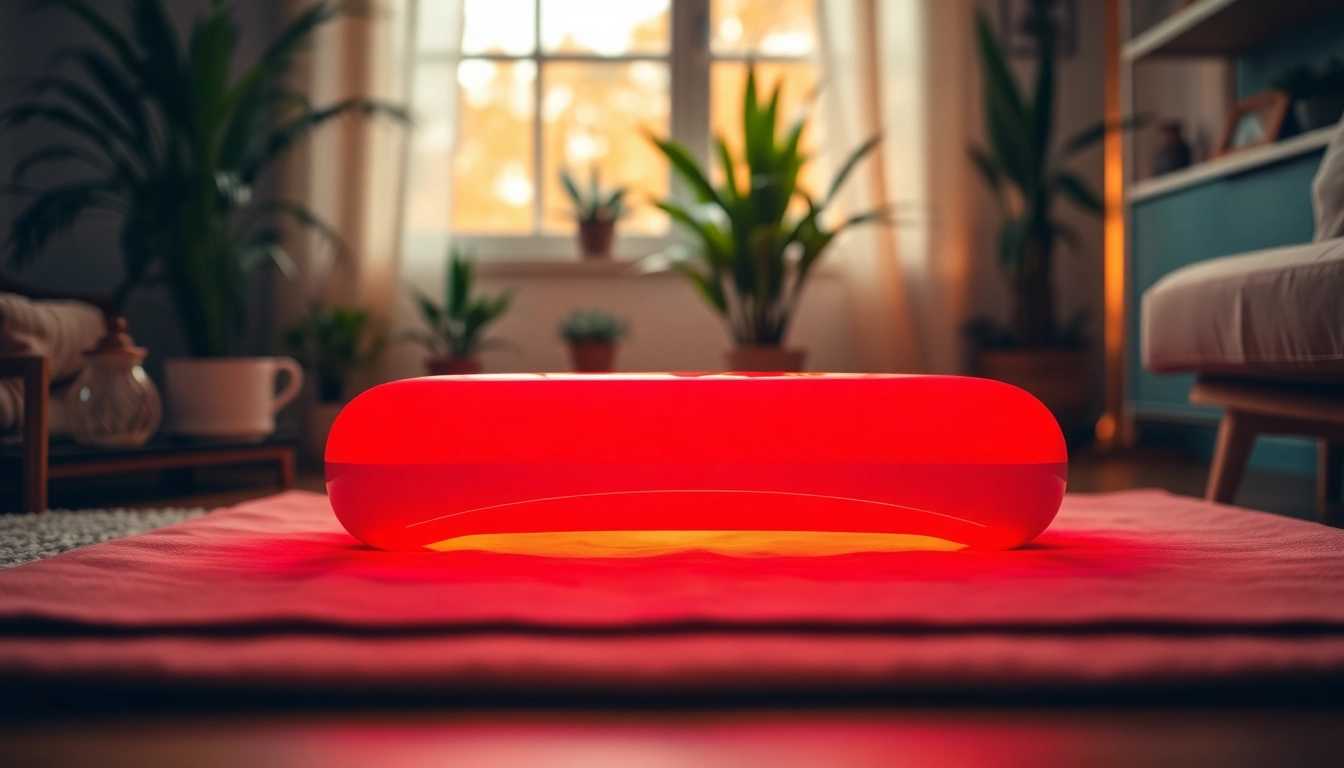Understanding Full Body Red Lighttherapy at Home
Red light therapy has gained significant traction within the realm of at-home wellness solutions. With its ability to cater to various health concerns, many individuals are exploring the feasibility of implementing a full body red lighttherapy at home. This article delves into the nuances of red light therapy, its benefits, mechanisms, and how to set up an effective treatment space.
What is Red Lighttherapy?
Red light therapy (RLT) is a non-invasive treatment that employs low-level wavelengths of red light to stimulate healing and rejuvenation in cells. Unlike the ultraviolet (UV) rays from the sun, which can be harmful, red light therapy is safe and effective. RLT uses wavelengths between 600 and 650 nanometers, and near-infrared light ranges from 800 to 880 nanometers. This dual-spectrum approach targets deep tissues and promotes various cellular processes.
Benefits of Full Body Red Lighttherapy
The benefits of full body red light therapy are extensive. First and foremost, RLT has been shown to enhance skin health by promoting collagen production, reducing wrinkles, and improving overall skin texture. Additionally, it can aid in muscle recovery post-exercise by reducing inflammation and expediting the healing of injuries.
Benefits also extend to mental health, where red light therapy has been associated with improved mood and reduced symptoms of anxiety and depression. This holistic therapy might support weight management efforts by potentially boosting metabolism and enhancing fat loss when combined with a healthy lifestyle.
How Does Red Lighttherapy Work?
The mechanism behind red light therapy involves the absorption of light by the mitochondria in cells. This process enhances mitochondrial function, leading to increased cellular energy (ATP) production, which facilitates improved cell repair and regeneration. Consequently, enhanced energy levels promote healing and recovery across various body systems.
Research has shown that red light therapy can increase circulation as well, delivering oxygen and nutrients to tissues while removing toxins and metabolic waste. This enhanced blood flow contributes to the numerous therapeutic benefits offered by RLT.
Choosing the Right Equipment for Home Use
Types of Full Body Red Light Devices
When exploring options for a full body red light therapy setup, various device types are available to suit different needs and preferences. Popular choices include:
- Full Body Panels: These devices are designed to cover a larger area, allowing for simultaneous treatment of various body parts. They are particularly effective for comprehensive sessions.
- Handheld Devices: Portable devices allow users to target specific areas of concern, making them versatile for localized treatments.
- Red Light Therapy Masks: Tailored for facial treatments, these masks can rejuvenate skin and reduce signs of aging.
Key Features to Look For
While selecting a red light therapy device, certain key features should be prioritized:
- Wavelength Range: Ensure the device operates within the optimal range (600-650nm for red light, 800-880nm for near-infrared).
- Power Output: Higher power output translates to more effective treatments. You may look for devices with sufficient wattage to deliver enough energy.
- Size and Coverage: Assess how much of your body the device can cover. A larger panel could be beneficial for full body treatments, while smaller devices can provide targeted therapy.
- Ease of Use: Simple interfaces and setup processes can significantly enhance your experience.
Setting a Budget for Your Purchase
Establishing a budget is crucial before investing in a red light therapy device. Pricing can range significantly based on size, quality, features, and technology. While it may be tempting to go for lower-priced options, it’s vital to ensure that the device meets recommended safety and efficacy standards. Investing in quality can yield better long-term results and satisfaction.
Creating Your Own Red Lighttherapy Space
Optimal Room Setup for Treatment
Creating a dedicated space for red light therapy can enhance treatment effectiveness. Choose a quiet area where you can relax without interruptions. Ideally, the room should allow for comfortable positioning with the therapy device at an appropriate distance to ensure optimal light absorption.
Good lighting and a calm atmosphere, perhaps with dim lighting or soothing colors, can contribute to a more enjoyable experience. Consider adding elements of comfort, such as soft seating or cushions, to help you unwind during treatment.
Safety Considerations
Safety is paramount when engaging in any at-home therapy. Red light therapy is generally safe, but precautions should be taken:
- Do not stare directly into the lights during treatment.
- Consult with a healthcare professional, especially if you’re pregnant or have any pre-existing conditions.
- Follow the manufacturer’s guidelines regarding treatment duration and frequency to avoid any irritation or discomfort.
Incorporating Relaxation Techniques
Integrating relaxation techniques into your red light therapy sessions can amplify their benefits. Consider practices such as deep breathing, meditation, or mindfulness to enhance mental clarity and overall well-being. Short sessions of gentle stretching or yoga can also complement the therapy, promoting relaxation and body awareness.
Best Practices for Effective Treatments
Recommended Treatment Frequency and Duration
Establishing a routine can significantly enhance the efficacy of red light therapy. Typical recommendations suggest starting with sessions that last between 10 to 20 minutes, multiple times per week. As your body adjusts, you may extend the duration or frequency based on personal comfort and therapeutic responses. Monitoring your body’s reactions can help tailor the regimen to your specific needs.
Combining Red Lighttherapy with Other Wellness Activities
Red light therapy can be exceptionally effective when incorporated into a broader wellness plan. Activities such as regular exercise and a balanced diet can amplify its benefits. Additionally, pairing RLT with practices like massage therapy or hydrotherapy can enhance muscle recovery and relaxation.
Tracking Your Progress
Monitoring the results of your red light therapy regimen is essential for understanding its effectiveness. Consider maintaining a journal that logs your sessions, treatment times, and any notable changes in your physical and mental health. This documentation can provide valuable insight into what works best for you and may motivate you to stick with the therapy program.
Exploring Advanced Concepts and Innovations
Potential Risks and Contraindications
While red light therapy has minimal risks, it’s important to remain aware of potential contraindications. Individuals with specific conditions—like photosensitivity or those taking medications that increase light sensitivity should consult a healthcare professional before beginning treatment. Additionally, monitoring for any unexpected reactions during therapy is key to ensuring a safe experience.
Recent Innovations in Red Lighttherapy
The field of red light therapy is consistently evolving, with innovations that enhance the user experience and therapeutic outcomes. Progress in LED technology has led to devices that offer more potent treatment options and improved efficiency, allowing users to achieve results in shorter time frames. Newer products may feature integrated timers, adjustable wavelengths, and more user-friendly interfaces.
Future Trends in Home Therapy Solutions
As awareness regarding home-based therapy solutions continues to rise, the trend is set to grow with a focus on accessibility and affordability. Advances in technology are likely to simplify the creation of more versatile devices that cater to a broader audience. Additionally, research will continue to explore the full range of benefits red light therapy can provide, potentially leading to wider applications in everyday health and wellness routines.



